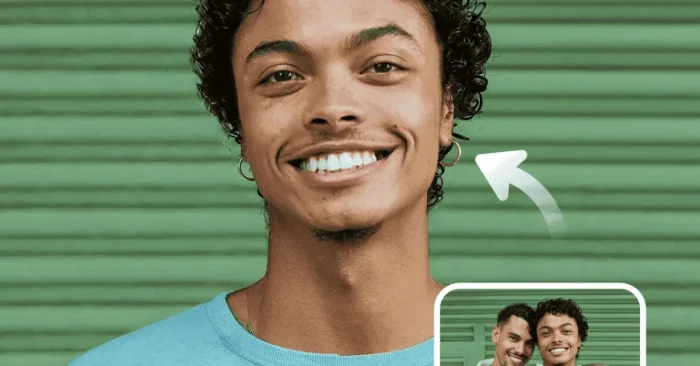Understanding AI Crowd Removal AI
In the past, cleaning up busy scenes involved endless masks, extensive rotoscoping, and frame-by frame rebuilding to achieve good-looking clean-up. Through AI Crowd Removal AI workflows, it can now identify people, reconstruct the background, and create realistic clean plates in an up to fraction of time! For creatives, filmmakers, marketers, and event teams, this translates to less reshoots, more usable takes, and quicker turnaround times.
In this guide, we’ll examine the common steps taken by modern tools to detect a subject, track motion, and synthesize missing pixels, where techniques excel, areas of struggle, and which apps find the best balance between control and speed. If you’ve ever wanted to clean a location after the fact, you’ll find a useful path below.
What is AI Crowd Removal AI?
AI Crowd Removal, like human object removal systems, is a computer vision pipeline that recognizes people and foreground objects, removes them from images or video, and reconstructs the background using trained priors, inpainting, and temporal information that adds believability and realism to the result to deliver images that are free of crowds.
How Does it Work?
Rather than the traditional solitary task of manually drawing masks, contemporary pipelines use an integrated approach to segmentation, tracking, and generative inpainting. Person and object detectors identify subjects one frame at a time, tracking in subsequent frames locks mattes to the subjects, and finally the inpainting component synthesizes the missing pixels under the subjects. In the case of video, temporal models use adjacent frames to extract logical forward or backward looking references,
While we are using planar or 3D tracking methods to make sure replacement texture stays locked and doesn’t swim. And for still images we are using diffusion type fill models that hallucinate plausible and relevant detail (brick pattern, leaves, signage) that blends in via lighting and grain.
Why It Matters in Content Creation
Location permits, call sheets, and road closures can be costly. With AI crowd removal, small teams can save shots that would otherwise be spoiled by pedestrians, anonymizing scenes to protect privacy, and supplying “hero” plates for graphics and titles at a fraction of a blockbuster budget.
Core Features
- Semantic segmentation: Assigns pixels as people, vehicles, or background to expedite selection.
- Robust tracking: Locks masks to subjects across occlusions, pans, and parallax.
- Generative inpainting: Recreates backgrounds with texture-aware synthesis/matching with grain.
- Temporal consistency: Reduces flicker using multiple referenced frames on continuity.
Benefits and Limitations
Advantages
Teams save hours of rotoscoping, salvage otherwise unusable takes, and protect identities in public footage. For social clips and commercial spots, AI crowd removal can turn chaotic plates into clean, brand-safe backdrops with minimal manual work.
Challenges and Limitations
This solution can struggle with heavy motion blur, reflective surfaces, or complex parallax where the background was never visible. Generative fills may introduce repeating patterns or “melty” textures if the model lacks contextual cues. Night scenes with sensor noise require extra grain and color-management to hide seams. Finally, long shots with wildly changing perspective often need a hybrid approach—AI for first pass, artist polish for edges and shadows.
Who Can Benefit?
Run-and-gun filmmakers, wedding and event videographers, travel creators, real-estate marketers, documentary teams, journalists, and product marketers all gain from AI crowd removal when they need clean visuals without closing a location.
Top Use Cases
- Empty-venue looks: Remove visitors to showcase architecture, exhibits, or retail spaces.
- Privacy & compliance: Clear bystanders from sensitive shoots or blur/remove faces in public footage.
- Graphics-friendly plates: Create uncluttered backgrounds for titles, lower-thirds, or AR overlays.
Top 5 Tools for AI Crowd Removal AI
1. Adobe After Effects (Content-Aware Fill for Video)
Combines masks, tracking, and AI-driven fill to remove people across frames. Great for controlled shots; supports grain synthesis and edge refinement.
2. Runway
Browser-based editor with smart “remove” workflows, auto masks, background replacement, and fast exports—ideal for creators who want speed over node graphs.
3. DaVinci Resolve (Magic Mask & Object Removal)
Studio edition offers person/feature tracking via Magic Mask and Fusion-based object removal, with color-managed pipelines to keep fills consistent.
4. Mocha Pro (Remove Module)
Industry-standard planar tracker; its Remove Module builds clean plates using tracked surfaces—excellent for challenging shots with occlusions and long pans.
5. CapCut (AI Remove & Smart Cutout)
Accessible option for social video: auto subject selection, quick object removal, and export presets for Shorts/Reels/TikTok.
FAQs About AI Crowd Removal AI
1. Is this technology better than manual rotoscoping?
For many shots, yes AI delivers a usable base in minutes. Complex edges, shadows, and reflections may still need artist cleanup for broadcast work.
2. Can beginners use it?
Absolutely. Template-driven tools like Runway and CapCut are beginner-friendly, while After Effects, Resolve, and Mocha Pro reward deeper control as you learn.
3. Does it work in real time?
Some apps preview masks in real time, but high-quality inpainting and temporal processing usually render offline. Short social clips can still finish quickly on modern GPUs.
4. Are there free options?
Yes freemium editors provide basic removal. For demanding commercial shots, paid tools with better tracking and fill quality are worth the investment.
















